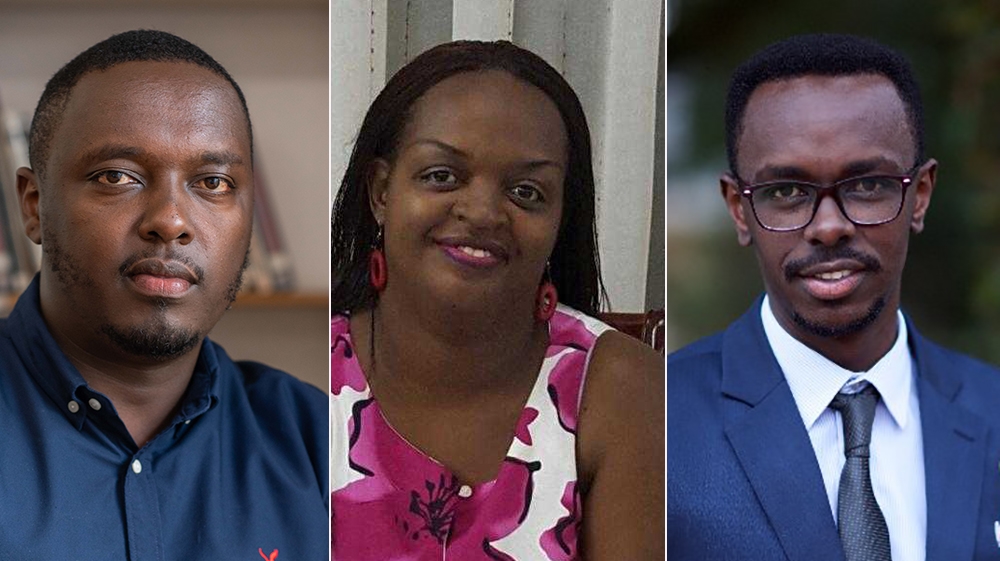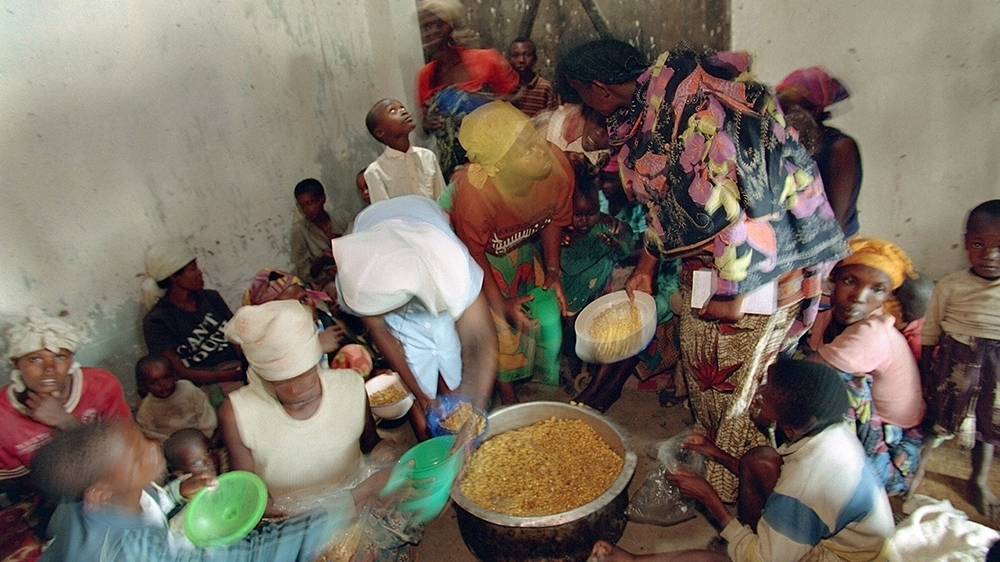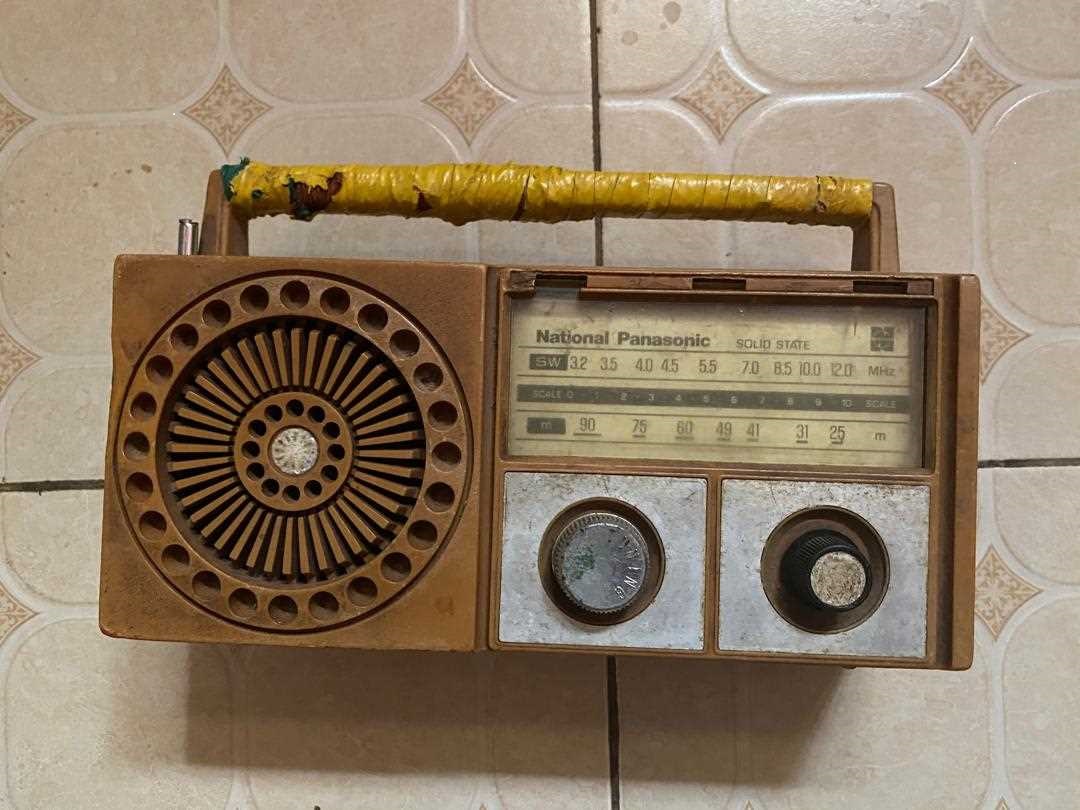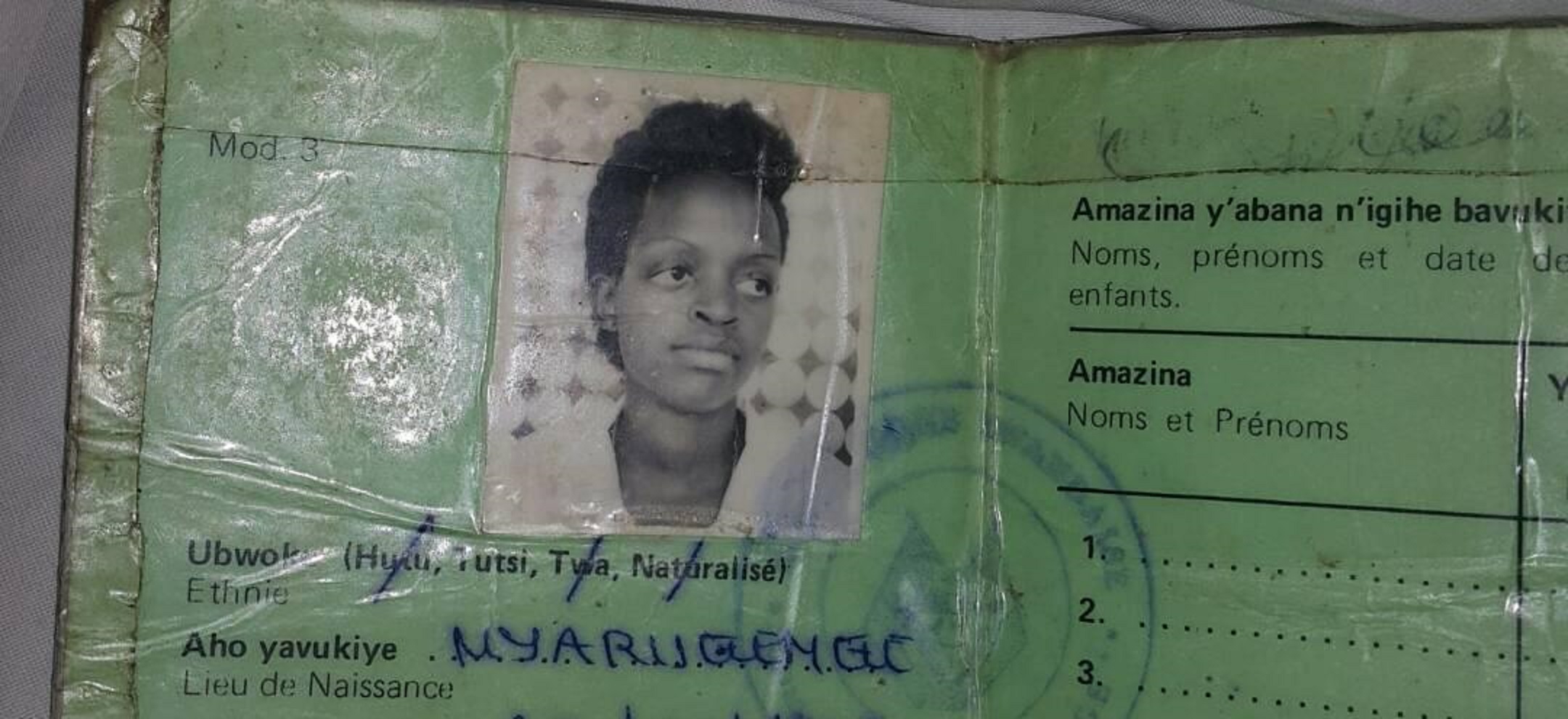Old Fashioned Radio Rwanda Genocide Propoganda
When Felicien Kabuga, an 84-year-one-time one-time businessman from Rwanda, was arrested in France on May 16, the earth was reminded of one of the darkest capacity in recent history.
During 100 days in 1994, at least 800,000 indigenous Tutsis and moderate Hutus were killed in the genocide against the Tutsi in Rwanda.
Kabuga, once one of the wealthiest men in Rwanda, was the co-founder and funder of Radio Idiot box Libre des Mille Collines (RTLM), a station established in 1993 that regularly called Tutsis "cockroaches" and encouraged people to "cutting down the tall trees", in reference to Tutsis. In one case the genocide started, the station circulate the names of people to exist killed and information about where they could be establish.
In 1997, the International Criminal Tribunal for Rwanda (ICTR), an international court established by the United nations Security Quango (UNSC) to approximate people responsible for the genocide, indicted Kabuga on 7 criminal charges including genocide.
Here, three survivors share their stories and reflect upon the significance of Kabuga'south arrest.

Claver Irakoze: 'Nosotros prayed to die softly'
My family lived in Kabgayi, a town 60km southward of the capital Kigali that is well known for its Catholic cathedral, schoolhouse and hospital.My begetter was a secondary school teacher and my mother a main school teacher. I have 2 brothers and 2 sisters.
I was 11 years old when the genocide confronting the Tutsis started in April 1994. But I remember my family and friends being targeted by the government from as early every bit 1990.
When the multi-party system started in Rwanda in 1991, new parties started to recruit members.
People from different political parties came to our home and asked: What political party do you belong to? The want to know where each i belonged was and then important. But my parents did not bring together whatsoever party.
As the political turmoil evolved, this recruitment process became an indirect style of mapping the political affiliation of Tutsi families. A response like "I don't belong to any party" could easily be interpreted as back up for the Rwandan Patriotic Front (RPF), which was fighting the government.
One of my commencement experiences at school was being asked what indigenous group I belonged to. When some of the states said nosotros did not know, our teacher asked united states to come up back the next twenty-four hour period with an answer.
Songs of hate
In July 1993, RTLM was created. It was a turning point.
We had very few radio stations before and then. There was Radio Rwanda, the national radio station which was controlled past the government, and a few other radio stations that could be heard by short wave.
At that place were some radical journalists at Radio Rwanda, but there was however a degree of moderation. RTLM, on the other hand, was direct propagandistic. Information technology had been created for that purpose.
Nosotros listened to RTLM. Nosotros listened to learn – to know what was developing.
I recollect RTLM broadcasting songs conveying hatred and demonising the Tutsi. The songs would openly phone call for our extermination. Political slogans were translated into song and young people were mobilised into youth movements. These youth movements were key to executing the genocide.
As a kid I was scared. I was scared by what I saw in my parents. They lacked promise. They were defenceless. Now that I accept children myself, I realise how hard it is if yous accept no promise.
And and so the genocide started
Genocide does non come quickly. The dehumanisation of the Tutsis began in the years before 1994. Everything from getting a task to your freedom of movement was linked to your ID, which stated your ethnic grouping.
Every bit a immature male child, my life consisted of school so abode and church onSundays. My last memories from before the genocide are of my family preparing for Easter.
Easter was on April 3. I remember RTLM broadcasting that something big was going to happen and that the National Army should be on standby to protect the country. Merely we were used to such letters.
Then the genocide started.
On April 6, the aeroplane carrying the president,Juvenal Habyarimana, was shot down killing him and all the others on lath. The anarchy started immediately. Information technology was like there was a plan. Roadblocks were put in place within minutes of the crash. By the following morning time, people were being stopped at them by both the army and armed fighters and asked for their ID.
Journalists from Radio Rwanda told people to stay at dwelling house until given further instructions.

On April 7, I heard people screaming on the hills that surrounded our area. That evening I could see homes on fire.
I observed my parents' fear. For them, it was their second feel of such anarchy. They had fled to neighbouring Republic of burundi in 1973 after Habyarimana took over in a coup, and Tutsis were attacked by crowds of Hutus.
For them, it was a reminder of that time.
Afterward learning almost the death of the president, my mum told u.s.a.: "Nosotros are dead." My parents could no longer contain their fear.
Neighbour against neighbour
Some days after the crash, a Hutu neighbour came to warn u.s.a.. "I've known yous for long and I don't want to kill y'all," he said. But he did want to be the beginning to loot our house.
Later the genocide, we learned that our neighbour had non only looted our house, but destroyed information technology.
Neighbours were pitted against neighbours. This is what a "genocide of proximity" means.
We fled to St Joseph's College, the schoolhouse where my dad taught.
Thousands of people were heading to the cathedral, which was adjacent to the school. Then we joined the crowd – simply just earlier reaching the cathedral, nosotros turned in the direction of the school instead.
When we first reached information technology, in that location were merely four or five families there – all relations of people who worked in the school.
Nosotros stayed in the school dormitories because the students were not there. There were priests living in one wing of the school, which made us feel protected.
In the days that followed, many people tried to attain the cathedral because they, too, thought they would be protected. Only the killers allowed people to go there because information technology would make them easier to impale.
Presently, the school was full, every classroom, dormitory, even the playground. At that place were thousands of people. Kabgayi as a site hosted upward to 50,000 Tutsi refugees.
The soldiers came with lists
In the following days, government soldiers entered the main gate of the school. They came with lists of names.
They took them far abroad before killing them.
Almost every day, they came.
All nosotros could do was pray. We prayed to die softly and to get to heaven. People were negotiating over how they should be killed – that was the level of trauma.
There was an outbreak of cholera and other diseases in the school. Yous tin can imagine the lack of hygiene with and then many people.
Hunger as well killed many people. The Red Cantankerous occasionally brought u.s. biscuits to swallow – 2 or three biscuits had to last y'all several days.
One twenty-four hours, my grandfather was brought to the school past someone who had found him hiding in his house. He had been badly wounded by machetes. He died in forepart of my mother, who could do zilch to assistance him.
So, on April 28, the soldiers took my father.
Hunger and liberation
We were liberated by RPF soldiers on June two. It was miraculous. Well-nigh of those who survived long enough to be rescued were children, the elderly and the sick.
But locked in the school, we had not realised the extent of the destruction outside.
Escorted by a few RPF soldiers, we marched from Kabgayi to a place in the s chosen Ruhango, which had already been captured by the RPF. We saw dead bodies on every street.
My mother, who was extremely ill by the fourth dimension nosotros were liberated, died two weeks later.
So when the genocide concluded in July, my siblings and I could rejoice at surviving, but had to face up a future without our parents.
Nosotros were starving. We had no home to return to. Simply we tried to be resilient. The love nosotros felt for one another helped the states to survive when nosotros had nothing.
The aftermath
I value the fact that the ICTR was put in place. Information technology was a big milestone in fighting injustice. Merely information technology completed fewer than 100 cases. How can you tell me that such a tribunal has done enough?
In detail, I exercise not think information technology has washed enough to prosecute church people who were involved in the genocide.
We have a huge responsibility to transmit the history of what happened. The book I wrote for children, That child is me, was an attempt to connect to my children and to tell them what happened to me. Not simply the pain and the hardship but likewise the lessons. I experience obliged to spend the remainder of my life teaching the younger generation most the past and virtually the value of life.
What we endured will never go out us. Once you have experienced genocide it becomes similar a permanent marker on you. It is there with yous in times of sadness and times of joy. You lot carry it with you until yous die.
Honore Gatera: 'Music they could dance to as they killed'
I was 13 years old in 1994.
Only a few wealthy families in the capital letter, Kigali, had televisions so. So, after the RTLM was created in 1993, everyone listened to it. I had a pocket-sized, old radio that I listened to it on.
Demonstrationsby the youth wings of the political parties became worse later on it started dissemination. RTLM quickly became more and more than propagandistic.

Famous commentators had programmes on RTLM. The Belgian presenter Georges Ruggiu had a testify in French. Subsequently the genocide, the ICTR sentenced him to 12 years in prison house for incitement to commit genocide.
Earlier April 1994, RTLM sent messages about how the Hutus must protect themselves against the "snakes" and the "cockroaches", meaning the Tutsis. There were already some killings taking place. People my family knew in another region of Rwanda were killed.
Nosotros heard about Habyarimana's death on the 6am news on RTLM. The radio immediately said the "cockroaches" shot downward the plane. People felt drastic. They were saying "it's over".
I call back the screams, as people broke into homes and burned them down.
All the while, the radio kept broadcasting letters similar "search for cockroaches – make certain you find them". The radio played music the militiamen could dance to as they killed.
Beatrice Uwera: 'Nosotros are still standing'
In 1994, I was 24 years old. My male parent worked in the Ministry of Agriculture. My female parent was a teacher.
I remember the first day the RTLM broadcast. The mood was scary. Every day, it stirred hatred.
My parents knew what was to come. They remembered the killings that had taken place in the 1970s. But they also had a feeling that we could not escape. They preferred to just listen and keep tranquility, because there was no alternative.
Early in the morning of Apr 7, at about 5am, I listened to the radio and heard that the president had been killed. I told my parents what happened and for the first time, my father told me: "We are finished. This is the end."
He knew we were going to be killed.
The genocide started immediately.

The army and armed fighters went from house to firm with lists. Lists of all the Tutsis.
They were using new machetes, guns, hoes, all kinds of instruments to kill people.
I had four siblings. By the grace of God, iv of us survived. Our Hutu neighbours protected us. They moved us from our house to theirs and hid us. Then, they helped the states reach Saint Paul Church building in Kigali.
My older sister, who did non alive with us, was killed with her family.
We reached Saint Paul at the cease of April. In that location were more than than 2,000 of us there. The priest at the church was Begetter Celestin Hakizimana. He was very clever about protecting us; he would requite food and money to the militias to stop them from killing united states of america. He tried his best, but sometimes they would still have men and boys to kill.
Because there were and then many people at the church, I was not so scared of being killed in a large grouping. My fear was of being killed alone.
Tomorrow they volition impale us, we would think. Each day we waited for them to come up.
And then, on June 17, the RPF rescued us.

Returning home
Nosotros found our business firm notwithstanding standing. But the windows and roof had been removed.
But Kigali was filled with the smell of expressionless bodies. It was catastrophic. More than than 200 people in my ain family unit had been killed. In my mother'south family, there were eight siblings. But one survived. We had to begin again from naught. The country had to offset from scratch.
I always call up of those people who were killed. I have iv children. I try to explain to them when I tin. But sometimes I cannot.
Rwanda tried to recover from the genocide. People are living in peace. Nosotros are not scared. Y'all can walk, you can get out, y'all can live where you lot want. We are working together.
We are still good friends with the Hutu neighbours who protected us. We visit each other. Nosotros help each other. It is a very strong human relationship. Yous cannot draw how strong it is.
We wish that Kabuga could be tried in Rwanda. It would be practiced to show him that we are withal continuing. Just nosotros are happy that at least he has been caught.
0 Response to "Old Fashioned Radio Rwanda Genocide Propoganda"
Post a Comment